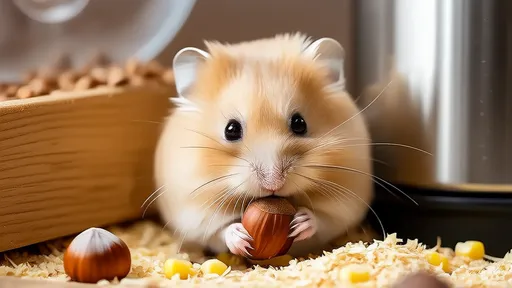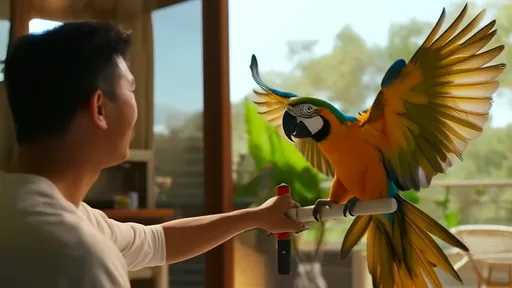Anyone who has ever shared their home with a feline companion knows the peculiar joy of calling their name—only to be met with a slow blink, a flick of the tail, or worse, complete indifference. While cats have earned a reputation for being aloof, the truth is far more nuanced. Their responsiveness often hinges on how we communicate with them. Understanding the subtle art of getting your cat’s attention isn’t just about volume or repetition; it’s about tapping into their instincts, preferences, and even the musicality of their name.
The Science Behind Feline Name Recognition
Cats may not respond to their names with the same eagerness as dogs, but research suggests they do recognize them—when delivered the right way. A study published in the journal Scientific Reports found that domestic cats can distinguish their names from other words, even when spoken by strangers. However, their selective responsiveness often comes down to tone, context, and reinforcement. Unlike dogs, which are bred for cooperation, cats are solitary hunters by nature. Their evolutionary wiring prioritizes curiosity over obedience, so a bland or demanding tone is easily ignored.
To boost your cat’s response rate, start by observing how they react to different sounds. Many cats perk up at higher-pitched, sing-song tones—a throwback to the frequency of a kitten’s mewl. Others respond better to whispered or rhythmic utterances. Experiment with elongating syllables or adding a upward inflection at the end of their name. For example, "Leo" might become "Leeee-oooh." This playful modulation mimics the cadence of prey-like sounds, triggering their innate curiosity.
The Power of Positive Reinforcement
Names become meaningful to cats when they’re consistently paired with positive experiences. If "Mittens" only hears her name before a vet visit or a bath, she’ll quickly learn to associate it with stress. Conversely, linking her name to treats, gentle strokes, or playtime creates a positive feedback loop. Try keeping a stash of high-value treats—like freeze-dried chicken or tuna flakes—reserved exclusively for name-response training. Say their name clearly, wait for even the slightest head turn, and immediately reward them. Over time, they’ll learn that responding pays off.
Timing is crucial. Cats live in the moment, so rewards must be instantaneous. Delaying by even a few seconds can confuse them. For multi-cat households, use distinct names with contrasting rhythms (e.g., "Binx" vs. "Seraphina") to avoid confusion. Some owners find success with clicker training—a sharp "click" sound followed by a treat—to mark the exact moment their cat acknowledges their name.
The Name Itself Matters
Not all names are created equal in the feline world. Shorter names (one or two syllables) with sharp consonants (like "Kiki" or "Max") tend to cut through ambient noise more effectively. Names ending in an "-ee" sound (e.g., "Lily," "Zoe") exploit cats’ sensitivity to higher frequencies. Avoid names that sound too similar to common commands or household noises—"Kit" might blend into "sit," and "Ray" could be mistaken for the fridge door opening.
Interestingly, some cats develop nicknames organically based on their behavior. A cat who chirps frequently might earn a moniker like "Birdie," which naturally lends itself to an animated, high-pitched call. Others respond better to names that reflect their personality—a dignified "Winston" might prefer a deeper, measured tone, while a mischievous "Pip" might react to a quick, staccato delivery.
Environmental and Emotional Factors
A cat’s willingness to respond depends heavily on their surroundings and mood. In a chaotic environment—say, during a dinner party—even the most attentive cat might retreat. Training works best in quiet, familiar spaces where they feel secure. Likewise, a cat engrossed in bird-watching or a nap is unlikely to abandon their activity for a half-hearted call. Respect their focus; try again later or gently rattle a treat bag to shift their attention.
Age also plays a role. Kittens are generally more adaptable to name training, while older cats may require patience. Senior cats with hearing loss might respond better to visual cues—like a hand signal or flashlight flicker—paired with their name. For rescue cats with unknown histories, their previous name (if they had one) might carry negative associations. In such cases, a new name symbolizes a fresh start, but consistency is key—avoid switching names once chosen.
Beyond the Name: Building a Dialogue
Ultimately, name recognition is just one thread in the rich tapestry of human-feline communication. Cats "talk" through body language, purrs, and even prolonged eye contact (a slow blink is their version of a kiss). When your cat responds to their name, reciprocate by acknowledging their cues. Over time, this mutual understanding deepens the bond, transforming a simple call-and-response into a genuine conversation.
So the next time you call your cat and receive no reply, don’t take it personally—adjust your approach. With patience, creativity, and a pocketful of treats, you might just find your once-aloof companion trotting over at the sound of their name, eyes bright with recognition.

By /Jul 24, 2025

By /Jul 24, 2025

By /Jul 24, 2025

By /Jul 24, 2025

By /Jul 24, 2025

By /Jul 24, 2025

By /Jul 24, 2025

By /Jul 24, 2025

By /Jul 24, 2025

By /Jul 24, 2025

By /Jul 24, 2025

By /Jul 24, 2025

By /Jul 24, 2025

By /Jul 24, 2025

By /Jul 24, 2025

By /Jul 24, 2025

By /Jul 24, 2025

By /Jul 24, 2025